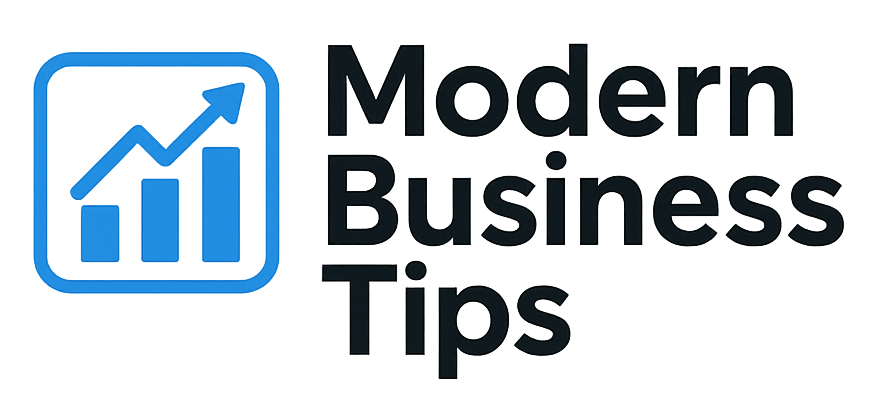Did you know that only 25% of businesses achieve their long-term goals? This shows how important it is to have good strategies for growth. Running my own business has taught me that setting goals well can really help. It’s all about planning and always trying to get better.
This way, my business can succeed in a changing market. It’s not easy, but it’s worth it.
Key Takeaways
- Only 25% of businesses reach long-term goals.
- Effective planning is key to sustainable growth.
- Structured goal-setting strategies enhance success.
- Continuous improvement is essential for competitiveness.
- Navigating through challenges can lead to growth opportunities.
- Regular assessments can align business objectives with market changes.
Understanding Long-term Business Growth Goals
Setting a strong foundation for long-term business growth is key to success. Defining goals gives a clear path for my business and guides decisions. Goal-setting is vital for measuring success and managing risks.
Defining Long-term Goals
Success requires careful thought in setting long-term goals. Goals should be specific, measurable, and achievable. They must be relevant and have a deadline to guide strategies well.
By setting clear goals, I can take action and align my team. This shared vision helps us move forward together.
Importance of Setting Goals
Goal-setting is essential for any business. It motivates my team and tracks our progress. Goals act as benchmarks for performance, helping me adjust as needed.
A clear goal set helps my business face challenges and grab opportunities. It keeps us focused and moving forward.
Common Challenges Faced
Reaching goals comes with many challenges. Businesses often face unclear goals, lack of resources, or poor communication. Spotting these challenges early helps me plan better.
This way, I can develop strategies to overcome obstacles and keep momentum.
Assessing My Current Business Position
To move forward, I need to understand where I stand now. I use tools and strategies to get a clear view. This helps me lay a strong base for my future plans.
By doing a SWOT analysis, I can see what I’m good at and what I need to work on. I also find out what opportunities and challenges are out there. This helps me make better decisions and plan my strategy.
Conducting a SWOT Analysis
A SWOT analysis is a smart way to check my business. It shows me what can help me grow, like being different or finding new markets. It also points out areas that need improvement.
By looking at opportunities and threats, I can quickly adjust to changes in the market. This keeps my business ahead.
Gathering Market Research
After the SWOT analysis, I dive into market research. I look at trends, customer habits, and what my competitors do. This research shapes my strategy and helps me stay ahead of market shifts.
Evaluating Financial Health
Checking my finances is key to knowing my business’s health. It shows me what I can use and invest. Looking at income, costs, and profits tells me if I can grow and stay strong.
Creating a Vision for the Future
A clear vision is key for guiding my business to its future goals. Developing a vision statement means creating a statement that shows where we’re headed. It guides our decisions, shapes how we talk to others, and builds our company culture.
Crafting a Compelling Vision Statement
To share my goals, I need a vision statement that speaks to everyone. It should be short, easy to remember, and clear on what to do next. A strong vision motivates my team and makes sure we all know our long-term path.
Aligning Vision with Values
My vision must match my company’s core values. This connection makes employees and stakeholders feel like they’re part of something bigger. When people see their values in our vision, they’re more committed and passionate, helping us reach our goals together.
Communicating My Vision to Stakeholders
It’s important to share our vision clearly with everyone involved. I need to tell our vision to employees, investors, and customers. Keeping them updated on our progress shows how important their help is in reaching our goals.
| Aspect | Importance |
|---|---|
| Vision Statement Development | Provides direction and inspiration |
| Aligning Vision with Values | Ensures commitment and engagement |
| Stakeholder Communication | Fosters a shared understanding |
Setting Measurable Objectives
To reach my long-term business goals, I set clear, measurable objectives. The SMART goal framework helps me do this. It ensures my goals are Specific, Measurable, Achievable, Relevant, and Time-bound. This way, I can move my business forward with purpose.
SMART Goal Framework
The SMART goal framework is key for setting measurable objectives. Specific goals tell me exactly what I aim to achieve. Measurable goals let me track my progress. Achievable goals are realistic, and relevant goals match my business vision.
Time-bound goals set deadlines, adding urgency and focus. This framework helps me stay on track and focused.
Key Performance Indicators (KPIs)
To check my success, I use Key Performance Indicators (KPIs) that match my SMART goals. These KPIs are benchmarks for measuring progress. By regularly checking my KPIs, I can adjust my strategies as needed.
Long-term vs. Short-term Objectives
It’s important to balance long-term and short-term goals. Short-term goals help pave the way for long-term success. By setting both, I have a clear roadmap for growth.
Dynamic strategies let me adjust my goals based on new information and changes. This way, I can overcome challenges and celebrate successes.
Developing a Strategic Plan
A successful strategic plan is key for any business to grow. It gives a clear direction, including mission, objectives, and strategies. This helps align resources and adapt to market changes.
Components of a Strategic Plan
Key parts of a strategic plan are:
- Mission Statement: A short statement of my business’s purpose and values.
- Objectives: Specific goals I aim to reach within certain times.
- Strategies: Plans for how I will meet my objectives and mission.
- Performance Metrics: Important signs to check if I’m meeting my goals.
Resource Allocation Strategies
It’s important to allocate resources wisely for growth. Here are some strategies:
- Budgeting: Spend money on projects that fit with my long-term goals.
- Staffing: Make sure I have the right people in key roles.
- Technology Investment: Use tools and platforms to improve efficiency and innovation.
Risk Management in Planning
Adding business risk management to my plan helps me prepare for challenges. Here’s how I can do it:
- Identify Risks: Find out what could threaten my business’s success.
- Analyze Impact: See how risks could affect my operations and goals.
- Develop Mitigation Strategies: Create plans to handle risks and stay flexible.
Building a Strong Brand Identity
A strong brand identity is key to standing out in a crowded market. It’s about being recognized by your audience through a memorable look and a story that speaks to them. Building a connection with customers through good engagement strategies creates loyalty and a community around your brand.
Importance of Brand Recognition
Brand recognition is vital for your business to shine. When customers can spot your products or services easily, it builds trust and encourages them to come back. A clear brand identity helps create emotional bonds, making your offerings more attractive.
Engaging with My Audience
Connecting with your audience is essential for building a loyal customer base. Using social media and email marketing helps you have real conversations that go beyond just selling. Good engagement strategies let you listen to feedback, understand what people want, and adjust your offerings.
Consistency in Messaging
Keeping your message consistent is key to reinforcing your brand identity. A unified message avoids confusion and boosts brand recall. Your messaging should reflect your core values and goals, creating a story that resonates with your audience. For more on keeping your brand strong, check out this article here.
Cultivating a Sustainable Business Model
Sustainability is key for lasting success today. I create sustainable business models that help the planet and boost profits. By understanding sustainability, I can make my brand appealing to eco-conscious consumers.
Understanding Sustainability Principles
Integrating sustainability principles helps my business reduce its environmental impact and support social causes. It’s more than just following rules; it’s about always getting better and innovating. This approach builds a sustainable culture and strengthens my business plan.
Adaptive Strategies for Changing Markets
Businesses need to be quick to adapt to market shifts. I keep up with trends and what customers want. Using data and feedback, I can tweak my plans and keep my business fresh in a changing world.
Ethical Considerations in Business
Business ethics are critical for trust with customers, employees, and investors. Ethical actions make my brand look good and keep customers loyal. Being open and honest shows my dedication to doing the right thing, ensuring a sustainable future.
| Sustainability Focus | Impact on Business | Examples |
|---|---|---|
| Energy Efficiency | Reduces operating costs | Solar power installations, LED lighting |
| Waste Reduction | Minimizes environmental footprint | Recycling programs, composting initiatives |
| Ethical Sourcing | Builds consumer trust | Fair trade products, local suppliers |
| Community Engagement | Enhances brand loyalty | Volunteering, charitable contributions |
Leveraging Technology for Growth
Using new technology is key to staying ahead in business. It helps me work more efficiently and reach more people. By focusing on automation and e-commerce, I can make my business better and grow it more.
Tools for Business Automation
Automation tools are vital for saving time on simple tasks. They let me focus on big ideas. The main advantages are:
- More efficient daily work
- Less chance of mistakes in routine tasks
- Better handling of data
E-commerce and Online Presence
Using e-commerce is important for growing my business. A strong online presence lets me connect with customers everywhere. With platforms like Shopify or WooCommerce, I can create a professional shop. The benefits are:
- Access to a global market
- 24/7 sales availability
- Better customer experience with tailored options
Analyzing Data for Insights
Data analysis helps me understand what customers want and market trends. It guides my decisions to grow the business. Important points to remember are:
- Knowing what customers buy and like
- Seeing how well marketing works
- Adjusting stock based on demand
Investing in My Team
Investing in my team is key to my business success. I focus on strategies that boost employee growth and create a supportive work environment. This helps us reach our long-term goals.
Importance of Employee Development
Employee development is essential for our team’s productivity and happiness. By using team development strategies, we give our staff the skills they need. This boosts their commitment to our mission.
Investing in their professional growth makes our team skilled, motivated, and ready for challenges. We hold regular training and workshops. This makes our team highly competent and drives our business forward.
Creating a Positive Workplace Culture
Improving our workplace culture is important for teamwork and innovation. I aim to create a place where everyone feels valued and empowered. This is done through open communication, recognizing achievements, and supporting work-life balance.
This positive culture boosts team morale and helps keep employees. Keeping a stable team is key for long-term success.
Leadership and Team Dynamics
Effective leadership is critical for guiding our team towards common goals. I empower my team to take charge of their roles, which boosts accountability and performance. By aligning individual goals with the company’s objectives, we work together better.
We hold regular strategy sessions to check our progress towards our goals. This is based on strategies from industry experts. Strengthening these areas builds a united team and sets the stage for lasting business growth.
Measuring Progress and Adjusting Strategies
It’s key to measure business performance for growth and success. Regular reviews help me see if I’m hitting my goals and if my strategies work. I can then adjust my plans to stay on track with my long-term goals.
Setting Regular Review Periods
Having a set time for performance checks helps me make better decisions. Regular checks keep my strategies on track and let me quickly adapt to market changes. This way, I stay focused on my business goals.
Analyzing Outcomes Against Goals
I compare what I’ve achieved with what I aimed for. Using key metrics, I see if my strategies are working. Tools like Key Performance Indicators (KPIs) help me measure success. Resources like the Product-Market Fit Pyramid make my analysis clearer.
Adapting Strategies Based on Feedback
Listening to customers and employees is important for growth. By involving them in reviews, I create strategies that meet real needs. This ongoing process helps my business stay open and adaptable.
Celebrating Milestones Along the Way
Recognizing achievements is key to my journey toward long-term business growth. Celebrating business milestones, big or small, creates a positive vibe in my organization. It’s not just about the wins, but also about the hard work behind them.
To keep my team motivated, I use different strategies. This includes team events, rewards, and public thanks. These actions make each team member feel valued and appreciated. It builds resilience and drive, leading to continued success.
Reflective business practices are also vital for my growth. I regularly review lessons learned at each stage. This helps me plan better for the future. Knowing what worked and what didn’t helps me improve and reach new milestones.



